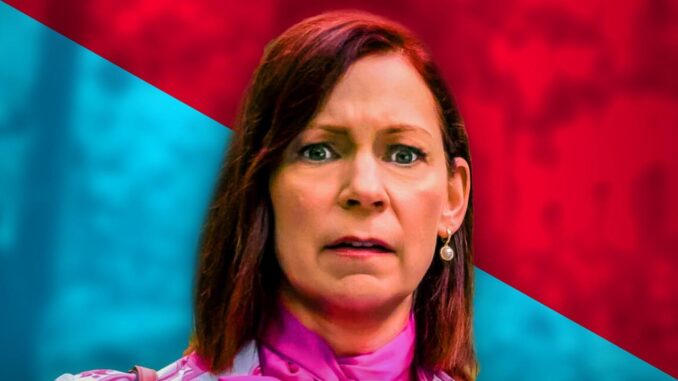
In the well-worn landscape of network television procedurals, where gritty realism and brooding detectives often dominate, CBS’s “Elsbeth” doesn’t just offer a breath of fresh air; it offers a full, invigorating gale. Starring Carrie Preston as the eponymous Elsbeth Tascioni, a character beloved by fans of “The Good Wife” and “The Good Fight,” the show has swiftly become a magnetic force in the cultural conversation, not by reinventing the wheel, but by filtering a familiar genre through a singularly unconventional gaze. Elsbeth’s unique perspective—a blend of eccentric observation, unwavering optimism, and a brilliant, circuitous mind—is precisely what makes it one of CBS’s most talked-about shows.
The primary structural innovation of “Elsbeth” lies in its “howcatchem” format. Unlike the traditional “whodunit” where the audience, along with the detective, unravels the mystery of who committed the crime, “Elsbeth” reveals the killer and their motive within the first act. This isn’t a spoiler; it’s the premise. This unique perspective immediately shifts the narrative focus from who did it to how Elsbeth will figure it out. The audience is in on the secret, delighting in the dramatic irony as the seemingly oblivious Elsbeth circles closer to the truth, often through a labyrinthine path of seemingly unrelated observations. This narrative device sparks conversation: Viewers aren’t just guessing; they’re dissecting Elsbeth’s methods, anticipating her next left-field question, and marveling at the ingenious, often mundane, detail that will ultimately expose the culprit. It’s a testament to the show’s confidence that it can shed the most sacred trope of the detective genre and still captivate, purely through the journey of its extraordinary lead.
At the heart of this unique perspective is Elsbeth Tascioni herself. Transplanted from the legal battlegrounds of Chicago to the bustling streets of New York City, she is an attorney assigned to observe NYPD investigations. But “observe” is a tame word for what Elsbeth does. She’s an eccentric hummingbird flitting through a world of cynical eagles, a vibrant burst of color in a typically muted procedural landscape. Her perspective is one of childlike curiosity coupled with profound legal acumen. While other detectives might focus on alibis or forensics, Elsbeth might fixate on a suspiciously pristine pair of shoes, a rare plant in an office, or an odd turn of phrase in a casual conversation. She sees connections where others see distractions, piecing together a kaleidoscope of clues that defy linear logic but inevitably lead to the truth. This unconventional approach to deduction is a constant source of water-cooler discussion: “Did you see how she figured it out this week? Who would even notice that?” her fans ask, reveling in her understated brilliance.
Furthermore, Elsbeth’s relentless optimism and politeness, even in the face of murder, present a tonal departure that is utterly refreshing. In a genre often saturated with grim realities, “Elsbeth” offers a delightful counterpoint. Her perspective imbues the show with a lightheartedness and charm that makes it eminently watchable and highly discussable. She’s frequently underestimated by the very criminals she’s pursuing, and sometimes even by the police officers she’s working alongside. Villains often indulge her seemingly innocuous questions, confident in their own cunning, only to find themselves ensnared by the very threads they allowed her to tug. This dynamic, where the audience is privy to both Elsbeth’s true intelligence and the villains’ fatal underestimation, creates a constant undercurrent of dramatic tension mixed with an almost comedic joy. People talk about “Elsbeth” because it makes them smile, offering intelligent entertainment that doesn’t demand emotional exhaustion.
In essence, “Elsbeth” thrives on its titular character’s capacity to see the extraordinary in the ordinary, the pivotal in the peripheral. Her unique perspective isn’t just a character quirk; it’s the foundational pillar of the show’s identity, driving its innovative narrative structure, its charming tone, and its captivating mysteries. In a crowded television landscape, “Elsbeth” stands out not by yelling the loudest, but by observing the most keenly, proving that a fresh pair of eyes can make even the most familiar stories feel utterly new and, most importantly, irresistibly talked-about. It’s a joyous disruption, reminding us that sometimes, the most profound insights come from the least expected places.
